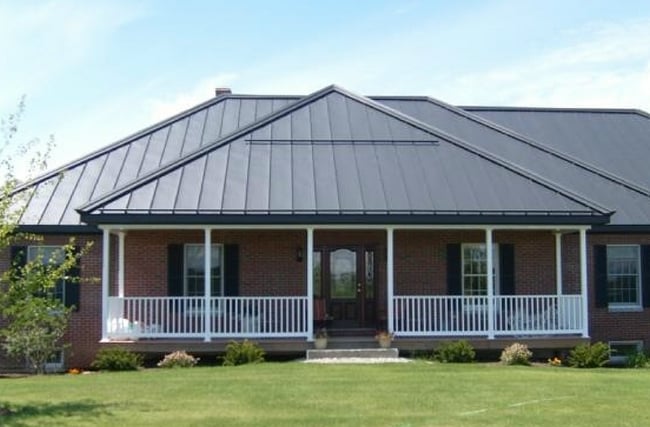As a distributor of premium metal roofing materials, we get a lot of questions about, well, metal roofing! Here are some of the most recent metal roofing questions we were asked in our blog post comments and through our contact form, plus our answers.
Does Metal Roofing have a Glare?

In short, if you're interested in metal roofing but concerned about glare, there are lots of options to discuss to make that issue pretty minor.
Can rainwater Runoff be collected off a metal roof for the garden?
This was actually a two-part question, with the reader asking specifically about runoff from a copper roof and whether the amount of copper in the runoff would increase or decrease over time as the roof oxides.
Regarding copper roofs and rainwater, the answer is yes, it can be collected and used for flower gardens. For centuries, copper has been used for roofing and gutters, and it has been collected in rain barrels the entire time. Copper is naturally anti-fungal and anti-bacterial, but the degree is limited by the concentration. Copper strips can be found installed near the ridge of asphalt, concrete, and wood roofs in many places, so that run-off over the copper reduces mold growth on the roof below the copper strips.
While it’s true that fresh runoff from new copper can accumulate to a measurable degree and become reactive in water, it’s easily neutralized by other metals and minerals. Copper flasks and water jugs have been safely used for drinking water, so the toxicity of copper is clearly very low and rarely a concern for most normal applications, plants, and animals. Toxic levels could conceivably be achieved through rare and controlled conditions, but it’s just not a thing for most outdoor circumstances. Unless you’re collecting water from fresh copper roof, running it through copper gutters and downspouts, and into a copper collection tank, it would be very difficult to maintain any high level of copper sufficient to damage most plants. Also, yes, as the patina adheres to copper as it ages, the amount of copper that is contributed to run-off drops dramatically - usually by half or more.
If you have questions about metal roofing, we're here to help! We offer a number of free guides that address common metal roofing questions, but feel free to contact us directly as well.



